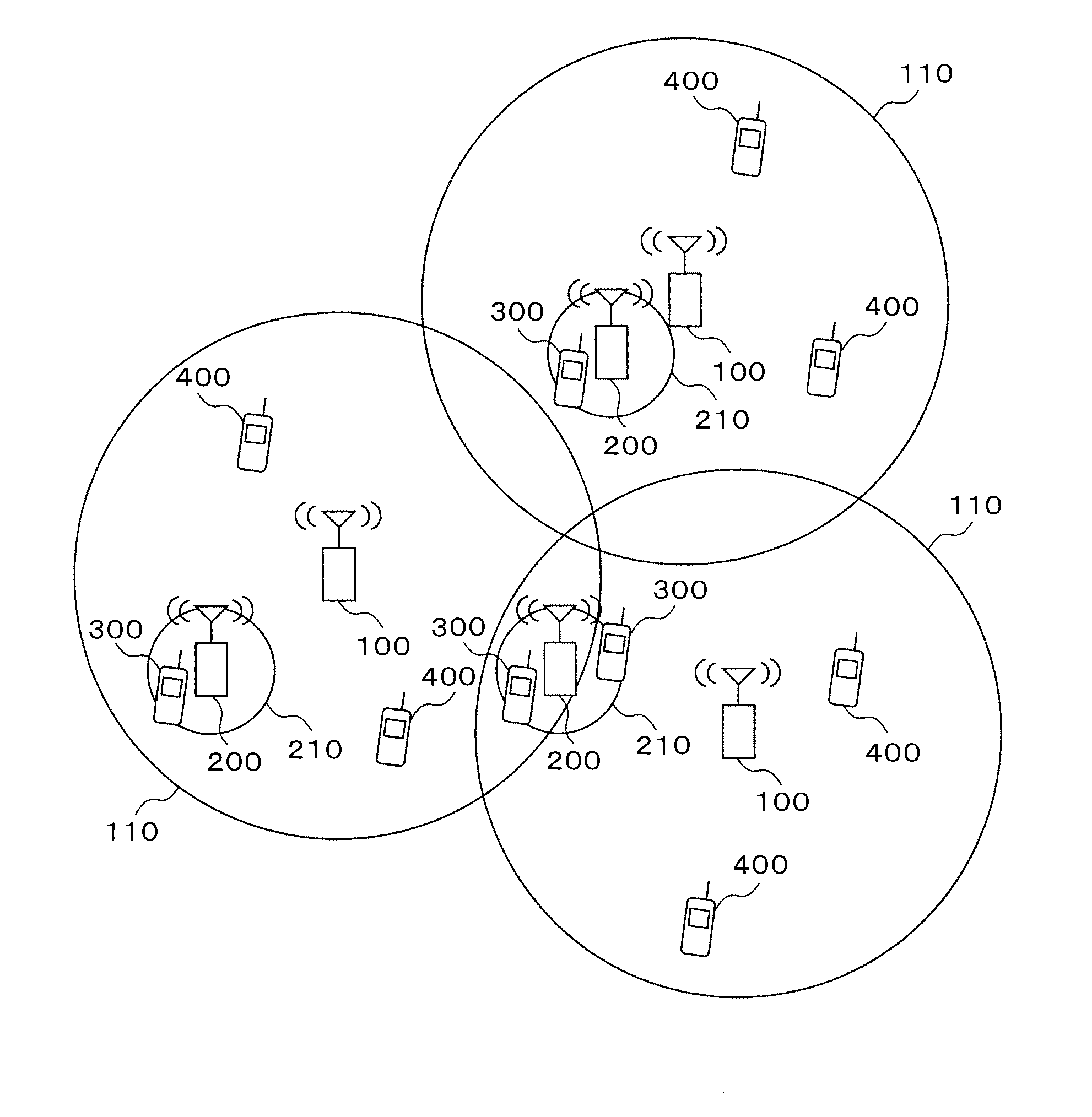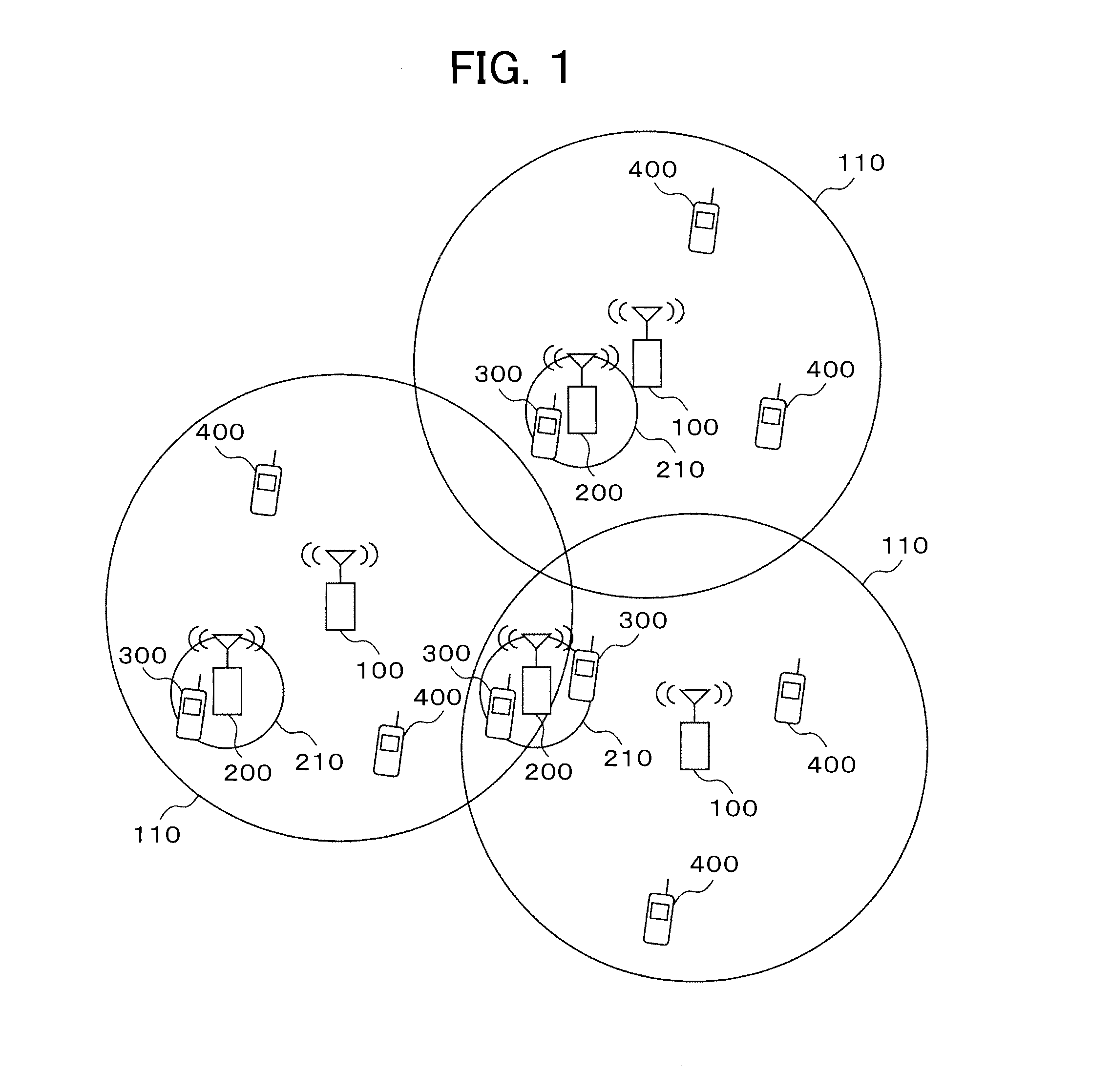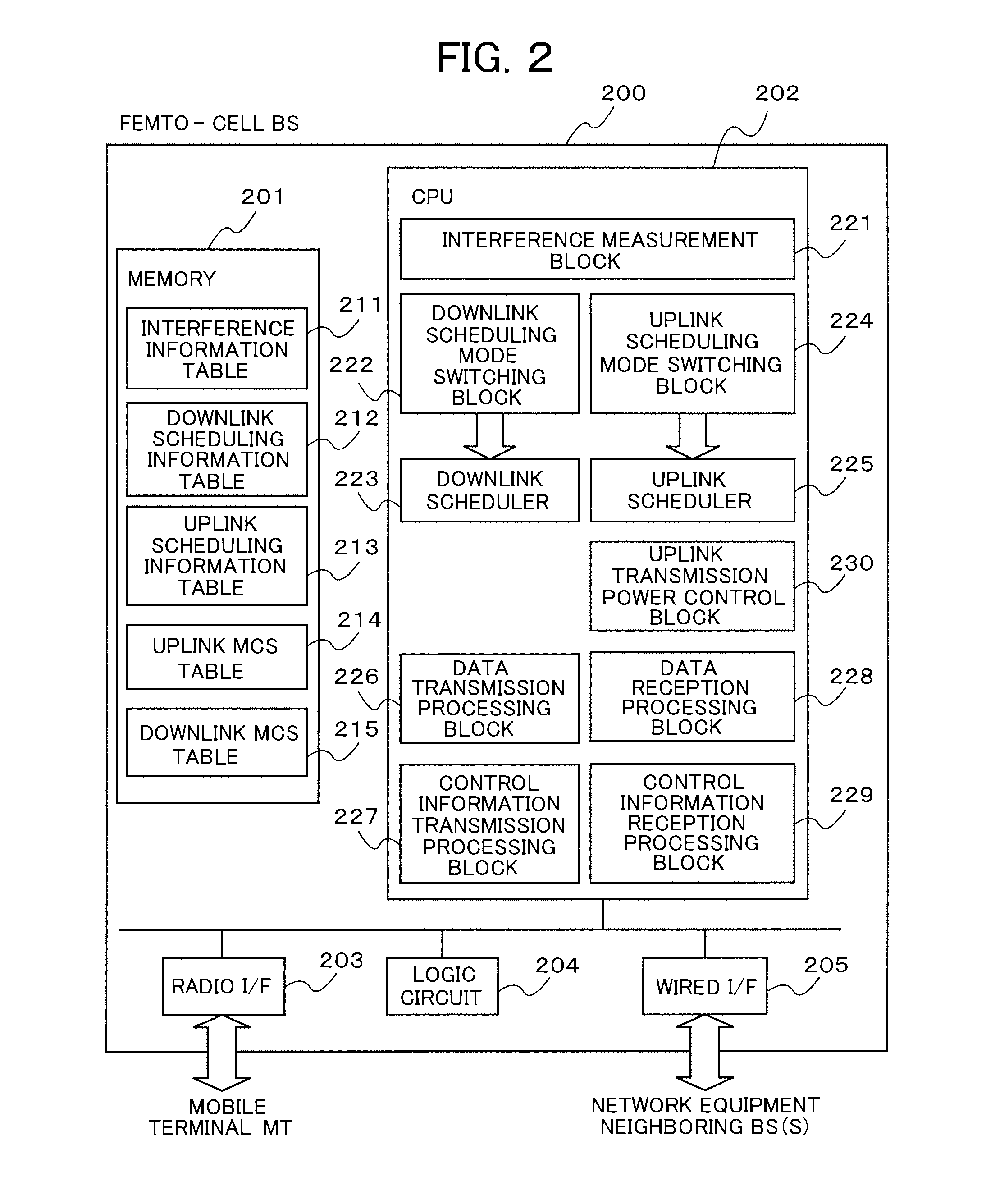Base station
- Summary
- Abstract
- Description
- Claims
- Application Information
AI Technical Summary
Benefits of technology
Problems solved by technology
Method used
Image
Examples
first embodiment
[0104]A first embodiment that uses the downlink scheduling mode properly will be described with reference to FIGS. 12 to 15B. According to the first embodiment, in the high data rate mode, it is intended to increase the rate due to the frequency selectivity gain, by assigning frequency resources that are continuous in the frequency domain as downlink communication resources. Further, in the interference mitigation mode, it is intended to distribute the influence of interference to the macro-cell MT 400 from the femto-cell BS 200, by assigning frequency resources distributed in the frequency domain as downlink communication resources. The assignment of the frequency resources used for the downlink data transmission to the femto-cell MT 300 is performed by the downlink scheduler 223 of the femto-cell BS 200 according to the downlink scheduling mode determined by the downlink scheduling mode switching block 222.
[0105]The following description will focus on the frequency resource assign...
second embodiment
[0110]A second embodiment that uses the downlink scheduling mode properly will be described with reference to FIGS. 16 and 17. According to the second embodiment, in the high data rate mode, it is intended to increase the rate due to the frequency sensitivity gain, by not applying frequency hopping to the frequency resources assigned as the downlink communication resources. Further, in the interference mitigation mode, it is intended to distribute the influence of interference to the macro-cell MT 400 from the femto-cell BS 200, by applying frequency hopping to the frequency resources assigned as the downlink communication resources.
[0111]In the following description, it is assumed that the frequency hopping is performed for each Hybrid Automatic Repeat Request (HARQ) transmission. The frequency resource assignment for HARQ transmission, which is used for the downlink data transmission to the femto-cell MT 300, is performed by the downlink scheduler 223 of the femto-cell BS 200 acco...
third embodiment
[0114]A third embodiment that uses the downlink scheduling mode properly will be described with reference to FIGS. 18 to 20. According to the third embodiment, in the high data rate mode, it is intended to increase the rate by improving the received SINR in the femto-cell MT 300 by using a high power spectrum density for the downlink data transmission. Further, in the interference mitigation mode, it is intended to reduce the received interference power spectrum density given by the femto-cell BS 200 to the macro-cell MT 400, by using a low power spectrum density for the downlink data transmission. Setting of the power spectrum density used for the downlink transmission to the femto-cell MT 300, is performed by the control information transmission processing block 227 according to the downlink scheduling mode determined by the downlink scheduling mode switching block 222 of the femto-cell BS 200.
[0115]The power spectrum density information is notified, as the transmission mode confi...
PUM
 Login to View More
Login to View More Abstract
Description
Claims
Application Information
 Login to View More
Login to View More - Generate Ideas
- Intellectual Property
- Life Sciences
- Materials
- Tech Scout
- Unparalleled Data Quality
- Higher Quality Content
- 60% Fewer Hallucinations
Browse by: Latest US Patents, China's latest patents, Technical Efficacy Thesaurus, Application Domain, Technology Topic, Popular Technical Reports.
© 2025 PatSnap. All rights reserved.Legal|Privacy policy|Modern Slavery Act Transparency Statement|Sitemap|About US| Contact US: help@patsnap.com



